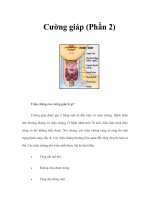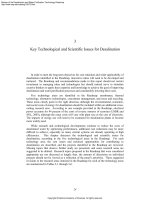Tài liệu READING EXERCISE, Level 2 docx
Bạn đang xem bản rút gọn của tài liệu. Xem và tải ngay bản đầy đủ của tài liệu tại đây (225.79 KB, 2 trang )
UNIT 5, Fever Speaking Exercise #2, Level 1-2-3
SPEAKING EXERCISE #2
Level 1-2-3
DIRECTIONS: Practice and repeat the following sounds with the teacher.
Pronunciation Guide
Initial Consonant 's' , Blends, and Diagraphs
Level 1 Level 2 Level 3
shots
skin
spots
stiff
shiver
sponge
stomach
seizure
sunken
Pronunciation guide
Initial consonant "s" (suh)
soap seat belt
Initial consonant blends pronounced as sk (skuh), sp (spuh), st (stuh)
skateboarding
sponge stomach
Initial consonant diagraphs pronounced as sh (shuh)
shots
Short Vowel Pronunciation Chart
a apple
e elephant
i igloo
o octopus
u umbrella
Long Vowel Pronunciation Chart
ã snake
ē bee
ī ice cream
ō boat
ū music
Page 1 of 2
UNIT 5, Fever Speaking Exercise #2, Level 1-2-3
TEACHER DIRECTIONS
For Level 1 proficiency, the teacher guides and models all oral work. No independent
reading by the learner should be required. Listening and speaking practice should be
with the teacher or other fluent English speaker. Teacher pronounces the "s" sounds,
"s" blends and "s" diagraphs and gives the examples from the unit that begin with the
letter “s”. Students repeat the sound with the words. For short and long vowel practice,
use letter-picture association. The teacher identifies long and short vowel words in the
level 1 word bank.
For Level 2 proficiency, the teacher guides and models all oral work with some
independent examples provided by the learner. Reading of the appropriate level can be
expected (e.g., Level 2 learners should be able to read level 1 and 2 words). Listening
and speaking practice can be with teacher or peers. The teacher pronounces the "s"
sounds, "s" blends and "s" diagraphs and gives the examples from the unit that begin
with the letter “s”. Students generate their own examples of "s" words. Students repeat
the sound with the words. For short and long vowel practice, use letter-picture
association. The teacher identifies long and short vowel words in the level 1 and 2 word
bank and students generate their own examples of words with long and short vowel
sounds in oral forms.
For Level 3 proficiency, oral work can be cued by the teacher for learner response. For
example, the teacher could say, “Students, who can pronounce the following word. . . ?”
Thus, the students become the guides and models for each other. Students in groups
or pairs accomplish listening and speaking practice independently with little direction
from the teacher. The teacher pronounces the "s" sounds, blends, and diagraphs and
gives the examples from the unit that begin with the letter “s”. Students generate their
own examples of "s" words. Students repeat the sound with the words. For short and
long vowel practice, use letter-picture association. The teacher identifies long and short
vowel words in the level 1, 2 and 3 word bank and students generate their own
examples of words with long and short vowel sounds in verbal and written forms.
Copyright © 2001. The development of this instructional material was funded by the Louisiana
Department of Education as part of an English Literacy and Civics Education grant awarded to the
Institute for Healthcare Advancement. This material, written by Rhonda Atkinson, Ph.D., Catherine
Frazier, B.S./ESL, and Tom Atkinson, Ph.D., was developed to be used in conjunction with What To Do
When Your Child Gets Sick by Gloria Mayer, Ed.D., R.N., and Ann Kuklierus, R.N., published by the
Institute for Healthcare Advancement. For more information, contact the Institute for Healthcare
Advancement, 15111 E. Whittier Blvd., Suite 460, Whittier, CA 90603, (800) 434-4633, Web site
www.iha4health.org; or the Louisiana State Literacy Resource Center, Louisiana Department of
Education, PO Box 94064, Baton Rouge, LA 70804, (225) 342-9442, Web site,
www.doe.state.la.us/slrc/index.htm.
Page 2 of 2









